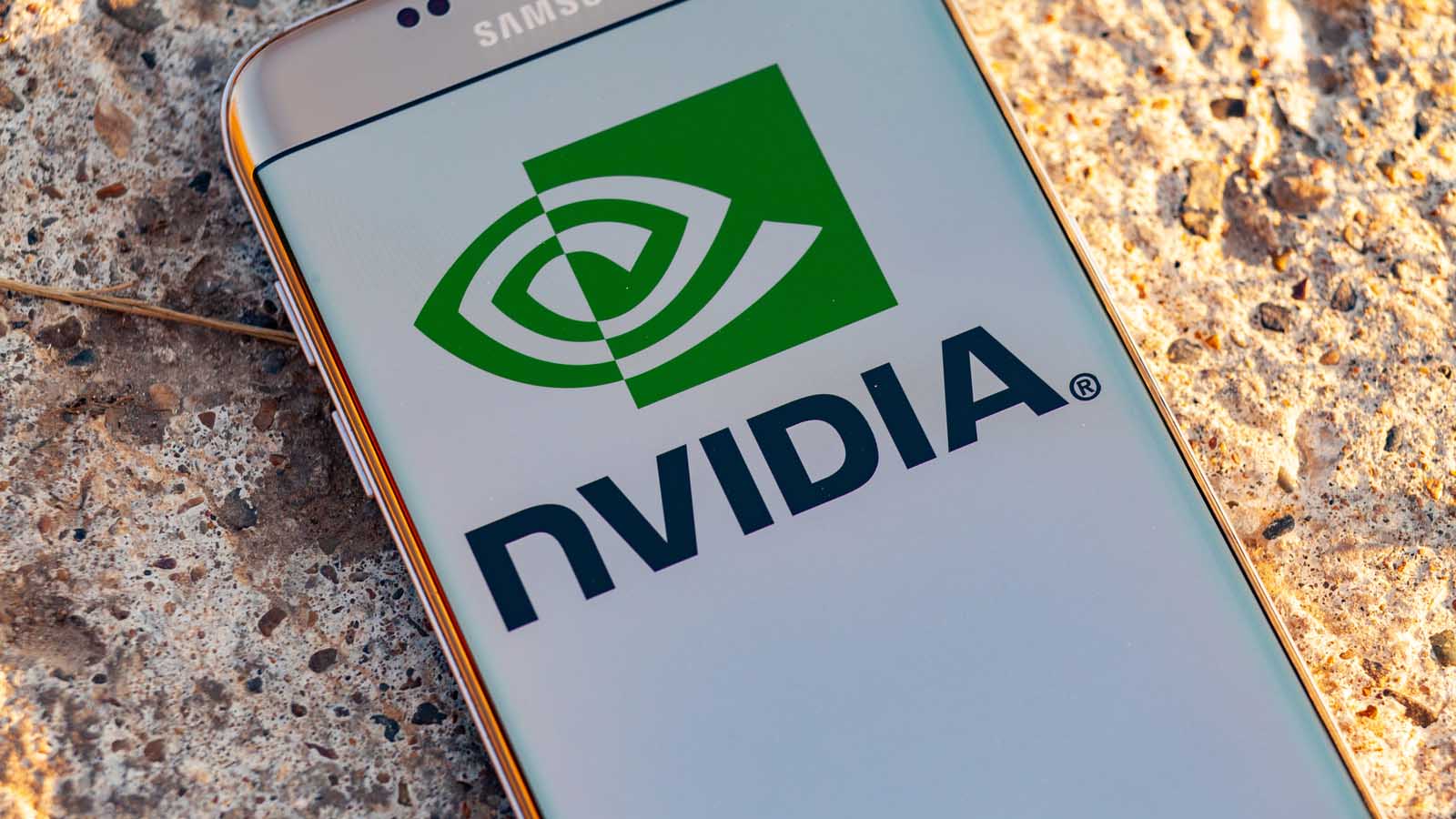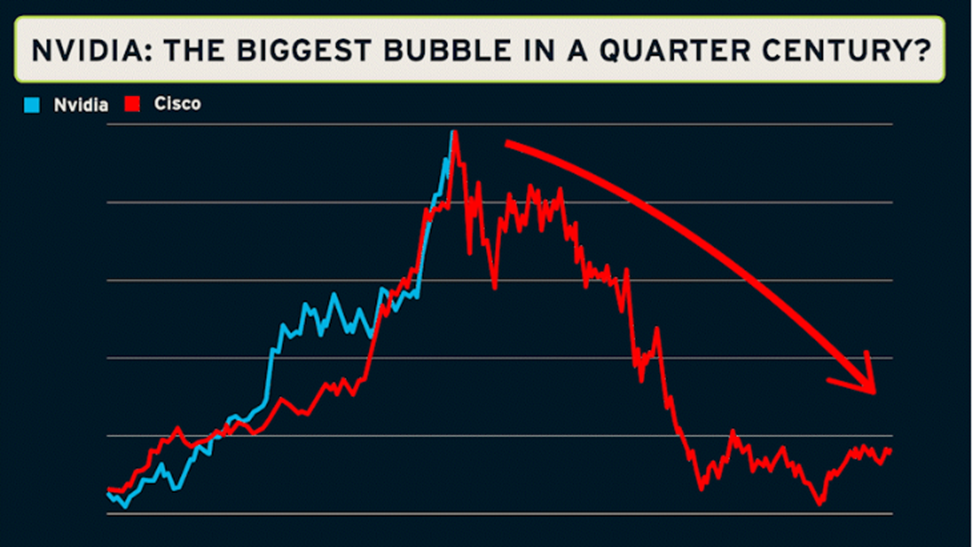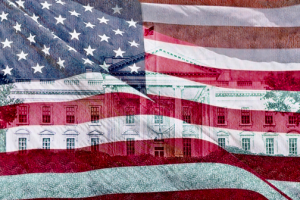
Is Nvidia flying too close to the sun? … why Eric Fry is concerned … consumer sentiment moves in the right direction … would lower rates beat inflation?
Yesterday, shares of semiconductor giant Nvidia rose another 3.5% to set a fresh all-time high.
As I write Wednesday early-afternoon, the AI darling is pushing even higher, up another 0.5%.
It has now returned 542% over the last two years. And if we go back five years, that return explodes to 3,120%.

In a moment, we’re going to highlight why our macro investor Eric Fry is nervous about Nvidia’s stratospheric share price. But first, if you don’t own Nvidia directly, don’t make the mistake of thinking this is irrelevant to your portfolio.
Nvidia ranks 3rd as the “most held” stock in the universe of ETFs available to investors
It trails only Microsoft and Apple.
Nvidia is in everything from your standard S&P & Nasdaq Index funds… to your semiconductor ETFs… to growth funds… to AI and robotics ETFs… to free cash flow funds… to blue chip growth ETFs… to covered call funds… and far more.
In total, a whopping 504 different funds hold Nvidia. For perspective, YCharts reports that as of March 2024, the total number of U.S. ETFs was 3,176.
So, if you invest in ETFs or broad index funds, there are decent odds that you’ve been a beneficiary of Nvidia’s meteoric rise.
The flip side is that you’re also a potential victim if Nvidia falls.
On that note, let’s turn to Eric:
Nvidia is trading for 87 times earnings. At that lofty valuation, the stock might struggle to continue its market-trouncing performance.
I’ve been wary of a somewhat severe drop for Nvidia’s share price for some time now.
Stocks like Nvidia make their own rules, at least for a while. But during Champagne-popping moments like these, we investors might want to keep in mind that markets are cyclical.
High valuations yield to low valuations… eventually.
What has Eric increasingly anxious is Nvidia’s resemblance to another high-tech darling from yesteryear
Back in the 1990s, investors couldn’t get enough of Cisco. For younger Digest readers, this was a tech stock that supplied the “plumbing” of the internet (think routers and network switching devices).
From its Dot Com peak to its ensuing low, Cisco crashed nearly 90%. Eric points out that this collapse happened despite Cisco having nearly double the earnings power of what Nvidia boasts today.
The following chart from Eric compares Nvidia’s recent price run-up with Cisco’s ascent back in the 90s. It’s not exactly a “feel good” graphic.

By the way, for investors who decided to stay the course and ride out Cisco’s crash, guess how long it took them to return to an all-time-high.
Ready?
They’re still waiting.
Now, if we factor in how Cisco began paying a dividend back in 2011, and we adjust the share price accordingly, then Cisco surpassed its 2000 high in 2021.
But with a focus on price action alone, well, keep waiting.
As Howard Marks once said “There’s no such thing as a good idea or bad idea in the investment world. It’s a good idea at a price, it’s a bad idea at a price.”
Clearly, buying Cisco at its price in March 2000 was a bad idea.
Will investors be saying the name thing about Nvidia in 21 years (or longer)?
The ripple effects if Nvidia stumbles
The potential contagion isn’t limited to the hundreds of ETFs that hold Nvidia. There’s also the domino effect within the broader tech industry.
Here’s Eric with more:
As the leading artificial intelligence chip designer, think of Nvidia as the gardener providing nourishment to the blossoming plants that are Alphabet Inc. (GOOGL), Meta Platforms Inc. (META), Amazon.com Inc. (AMZN), and Microsoft Corp. (MSFT).
Thus, Nvidia’s potential fall to Earth could have far-reaching consequences not only for the tech industry, but also for other sectors that benefit from AI advancements.
Soon, these tech stocks could experience a repeat of the dot-com crash of 2000, especially as they keep flying closer to the sun.
This is why the world’s wealthiest investors are rushing for the exits and unloading shares of their own companies in what’s being called “The Great Cash-Out.”
To be clear, Nvidia is a fantastic company. But it’s currently priced for perfection, and as we all know, eventually, imperfection shows up.
For now, be aware of this dynamic, and recognize how far Nvidia’s tentacles extend into the broader market.
Meanwhile, in more encouraging news, consumer confidence is rising
Yesterday, we learned that U.S. consumer confidence rose unexpectedly in May.
This is the first time in four months that shoppers reported feeling rosier about economic conditions.
From Bloomberg:
The Conference Board’s gauge of sentiment increased to 102 from an upwardly revised 97.5 in April, according to data out Tuesday. The reading beat all estimates in a Bloomberg survey of economists.
Not only was this the first climb in sentiment since January, but the measure jumped by the highest rate since last July.
Now, it wasn’t all good news.
Back to Bloomberg:
Despite the increase…with the Federal Reserve keeping interest rates at a two-decade high, voters are generally downbeat on the economy ahead of November’s election.
That was especially illustrated in Tuesday’s report as consumers’ perceived likelihood of a recession in the next year rose for a second consecutive month.
The risk is that if consumer beliefs about the likelihood of a recession become too sour, it would result in reduced spending as shoppers batten down the hatches. Of course, it’s that reduced spending itself that would usher in the very recession that’s feared.
While we’re on the topic of interest rates, yesterday brought the latest chatter on the potential timing of the first rate cut
It came from Minneapolis Federal Reserve President Neel Kashkari in an interview with CNBC.
When asked what would be needed for the Fed to cut rates, Kashkari said:
Many more months of positive inflation data, I think, to give me confidence that it’s appropriate to dial back.
“Many” suggests September is the first month that fits the bill. This echoes what we heard from Federal Reserve Governor Christopher Waller last week:
The economy now seems to be evolving closer to what the Committee expected.
Nevertheless, in the absence of a significant weakening in the labor market, I need to see several more months of good inflation data before I would be comfortable supporting an easing in the stance of monetary policy.
If we look at the CME Group’s FedWatch tool, a cut in September is now a coinflip.
As you can see below, the probability of the Fed holding rates holding steady at today’s target level of 5.25% – 5.50% clocks in at 51.9%. Meanwhile, the odds of a quarter or half point cut measures at 47.6%.

While it’s a tossup today, the trajectory of expectations has been moving in a hawkish manner. Last week, the odds of at least one quarter-point cut in September came in at 65.3%.
Keep your eyes on Friday. That’s when we’ll get the latest data on the Personal Consumption Expenditures (PCE) price index from April.
This is the Fed’s preferred measured of inflation, so it has the potential to move the markets, as well as forecasts about rate-cut timing.
Let’s end with a thought exercise about rate cuts
What if, to stave off inflation, the Fed needs to cut rates?
Yes, you read that correctly.
The going belief is that high interest rates are what’s needed to throw cold water on the economy. But what if, this time around, we have things backwards? Is it possible that today’s high rates are actually inflationary?
Here’s Bloomberg explaining this idea from BlackRock’s chief investment officer of global fixed income, Rick Rieder:
The best way for the Federal Reserve to temper inflation will be to lower rates, not hold them higher.
That’s because well-heeled Americans are earning more than they have in years from fixed-income investments, given that benchmark rates remain on hold at their highest level in a generation…
[Rieder said] “In fact, I would lay out an argument that actually if you cut interest rates, you bring down inflation.”Consider these “well-heeled” Americans…
Most of them are older and own homes with mortgage rates locked in around 3%.
Today, with high-yield savings accounts paying out over 5%, they’re enjoying a positive spread above their mortgage. Potentially, that’s some significant disposable income.
If the Fed cuts rates, this spread decreases or disappears. And theoretically, that’s less money sloshing about the economy.
Now, the question is what’s the inflationary tradeoff between lower rates that, historically, spur economic activity overall, versus lower rates that would decrease fixed income payments for these well-heeled Americans, resulting in less buying from them?
Well, one variable to analyze would be how much of consumer spending comes from these well-heeled Americans versus everyone else.
On this note, here’s AP News:
…As the huge baby boom generation has aged and, on average, has accumulated more assets, they have accounted for a rising share of consumer spending.
Americans ages 65 or over supplied nearly 22% of consumer spending in 2022, the most recent year for which data is available. That’s the highest such figure on records dating to 1989, up from about 16% in 2010.
That’s a lot of spending from the boomers, but still, just 22% of total activity.
So, is it time for the Fed to fight inflation by slashing rates?
I suspect that won’t be Jerome Powell’s takeaway.
But this does help shine a light on at least one reason why economic activity remains robust while so many Americans are barely making ends meet today.
Have a good evening,
Jeff Remsburg





